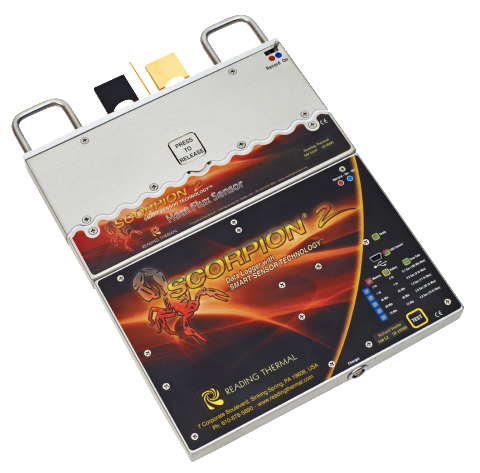The delicious aroma of fresh-baked bread is a heavenly thing. From the moment you walk into any bakery, the warm, inviting scent transports you to a comforting place. Bakers have perfected their craft over centuries, striving to create light, fluffy loaves that bring nourishment and joy. However, behind every artisanal boule or baguette lies precise engineering. The temperature profile during baking is one of the most influential yet subtle factors in determining a bread’s final texture, taste, and appeal. Getting the timing and temperatures just right requires balancing both art and science. To ensure you’re producing the highest quality goods, your bakery needs to optimize the temperature profile in bread baking.
This is where Reading Thermal comes in. With decades of experience in the baking industry, Reading Thermal provides precise instruments to paint the clearest picture of your oven temperature profiles. Using state-of-the-art technology, our systems can measure and analyze temperature variations throughout baking. This allows bakers to adjust and fine-tune their recipes and techniques for consistent results.
The Role of Temperature in Bread Baking
To understand the importance of optimizing temperature profiles, it is crucial first to grasp temperature’s role in bread baking. When the dough is placed into a hot oven, water inside the dough turns into steam and causes the loaf to rise. The heat also triggers fermentation, which produces carbon dioxide gas and contributes to the rise. This expansion process creates the light and airy texture we all love in a good loaf of bread. However, if the temperature is too high or too low, this delicate balance can be disrupted, resulting in an undesirable final product.
The Oven Temperature Profile
The oven temperature profile refers to the varying temperatures throughout the baking process. It is more complex than setting the oven to a specific degree and leaving it at that temperature for the entire baking time. The temperature inside an oven can fluctuate due to factors such as opening the door, adding more loaves, or even differences in heat distribution within the oven itself. These variations can lead to uneven baking, burnt or undercooked areas, or even collapsed loaves.
Importance of Optimization
Optimizing the temperature profile in bread baking is crucial for producing consistent, high-quality loaves. By accurately measuring and monitoring the oven temperature, bakers can adjust their recipes and techniques to achieve the desired result every time. This not only saves time and resources but also ensures customer satisfaction.
The Benefits of Optimization
- Consistency: With an optimized temperature profile, bakers can achieve consistent results every time, reducing waste and improving overall quality.
- Time-saving: By understanding and controlling the oven temperature profile, bakers can better predict baking times and adjust accordingly, leading to more efficient production.
- Energy efficiency: An optimized temperature profile allows bakers to avoid excessive or unnecessary oven heating, resulting in energy savings and cost reduction.
- Customer satisfaction: With consistent, high-quality products, customers are more likely to return for more delicious loaves, increasing sales and brand loyalty.
Get the Best Results with Reading Thermal
Here at Reading Thermal, we aim to help bakers achieve their best results by providing accurate and reliable temperature profiles. Our systems are designed specifically for the baking industry, and our knowledgeable team is always available to provide support and assistance. When optimizing the temperature profile in baking bread, no manufacturer offers better tools than Reading Thermal. If you’re interested in our services, call (610) 678-5890 Ext. 2 or contact us online for more details about our innovative products.

